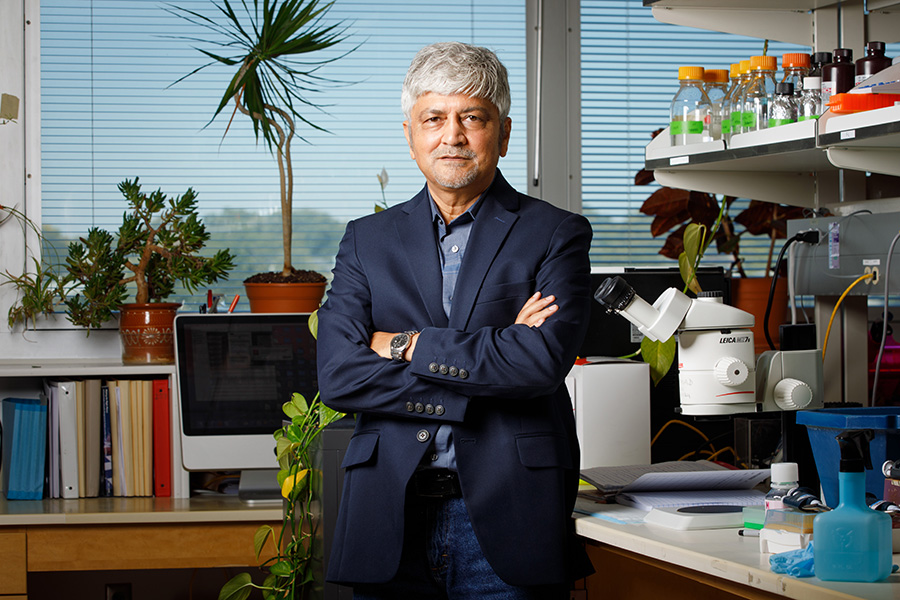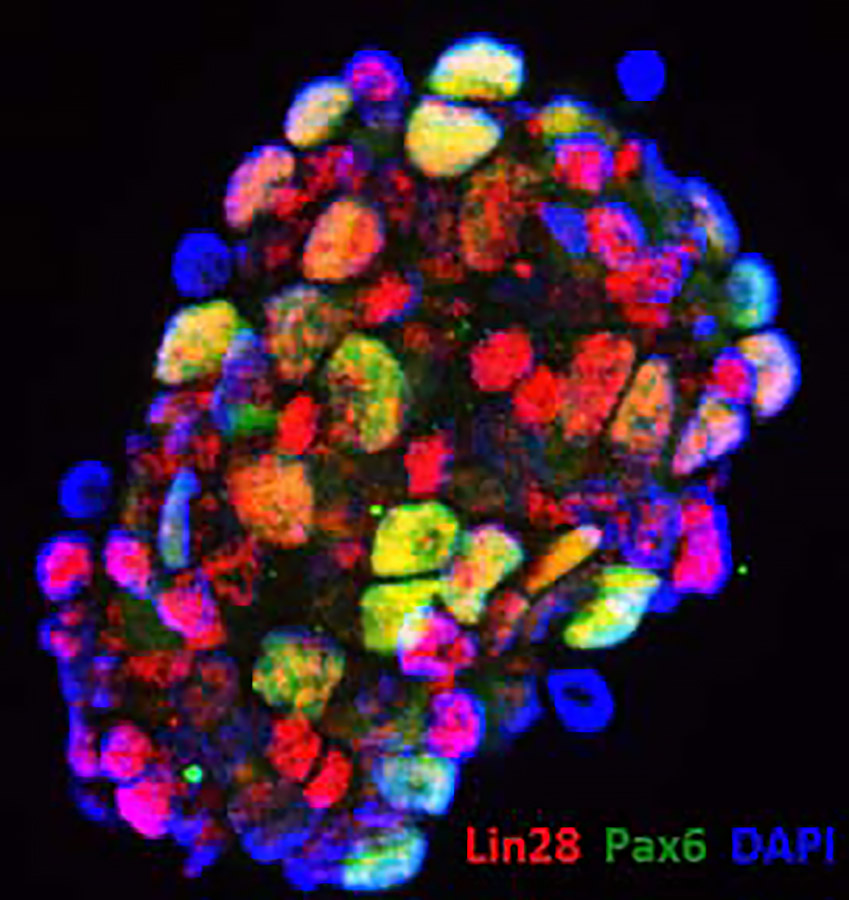The loss of the visual signal when photoreceptors (PRs) degenerate in age-related macular degeneration (AMD) or retinitis pigmentosa (RP) or the lost ability to transmit it to the brain when retinal ganglion cells (RGCs) degenerate in glaucoma invariably leads to blindness. Unfortunately, there is no effective treatment to reverse the loss of vision when photoreceptors or RGCs die. However, transformative research over the last twenty years has led to discoveries that are promising for regenerative medicine for retinal degeneration (Ahmad et al., 2020, PRER).
These include (1) identification of cell-intrinsic (Ascl2, Brm, Hmga2) and cell-extrinsic factors (Notch signaling) for retinal stem cell maintenance and their differentiation into photoreceptors/RGCs, paving the way for ex-vivo generation of retinal cell types, (2) the directed differentiation of pluripotent stem cells, whether embryonic stem (ES) cells or induced pluripotent stem (iPSC) cells, into photoreceptors and RGCs, providing platforms for disease modeling and cells for retinal repair, (3) modeling cell-cell interactions and regeneration using microfluidic devices to identify cell intrinsic and cell extrinsic targets for therapeutic regeneration, (4) the discovery that mammalian Müller glia (MG) possess neurogenic potential, raising the prospect of treating retinal degeneration from within, and (5) characterization of the role of microglia in retinal development and degeneration, thus identifying a potential non-cell autonomous (=cell extrinsic) player within the retina that can influence the initiation and progression of degenerative changes. Our lab is involved in each of these approaches toward better understanding of degenerative process and identifying molecular and cellular targets for therapeutic regeneration of photoreceptors and retinal ganglion cells.

